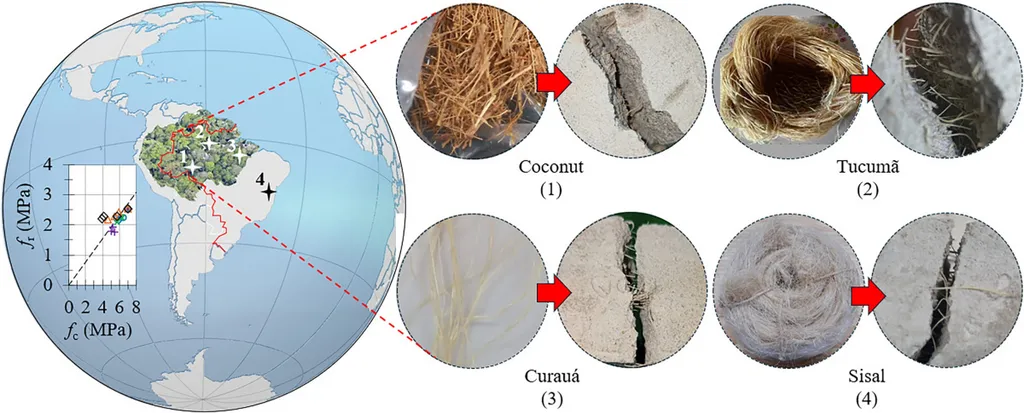In the quest to address water scarcity in arid regions, researchers have turned to innovative construction materials that not only enhance performance but also promote sustainability. A recent study published in the journal *Materials Research* (translated from Portuguese) explores the potential of structural mortars reinforced with sisal fibre, recycled rubber, and expanded vermiculite, offering promising insights for the construction and energy sectors.
The study, led by A.C.G. da Silva, investigates the mechanical properties of cementitious composites incorporating these materials. Three distinct mortar formulations were developed and evaluated based on various performance metrics, including water absorption, voids index, specific mass, compressive strength, flexural tensile strength, dynamic modulus of elasticity, and damping factor.
The findings reveal that the incorporation of sisal fibres (SF) in conjunction with rubber and vermiculite resulted in a 12–16% reduction in density, a 29.5–30.4% decrease in the dynamic modulus of elasticity, and a 2.5–9.0% increase in the damping factor. Despite an observed reduction of approximately 40% in compressive strength, the values remained within the acceptable range for structural applications.
“This study substantiates the technical viability and environmental benefits of the proposed mortars for the sustainable construction of cisterns,” said da Silva. The use of recycled rubber and expanded vermiculite not only reduces waste but also enhances the performance characteristics of the mortars, making them suitable for structural applications.
The commercial implications of this research are significant. The construction of cisterns—reservoirs designed for water collection, storage, and conservation—is a critical strategy for mitigating water scarcity. The adoption of these innovative mortars can lead to more sustainable and cost-effective construction practices, benefiting both the environment and the economy.
Moreover, the energy sector stands to gain from these advancements. The use of recycled materials in construction can reduce the carbon footprint of buildings, contributing to the broader goals of energy efficiency and sustainability. As the demand for eco-friendly construction materials continues to grow, the findings of this study could pave the way for new developments in the field.
The research highlights the potential of integrating recycled and natural materials into construction practices, offering a sustainable solution to water scarcity and environmental degradation. As da Silva noted, “The proposed mortars not only meet the technical requirements for structural applications but also align with the principles of sustainable development.”
In conclusion, this study represents a significant step forward in the quest for sustainable construction materials. The findings offer a compelling case for the adoption of mortars reinforced with sisal fibre, recycled rubber, and expanded vermiculite, paving the way for more environmentally friendly and cost-effective construction practices. As the construction and energy sectors continue to evolve, the insights gained from this research will undoubtedly shape future developments in the field.

